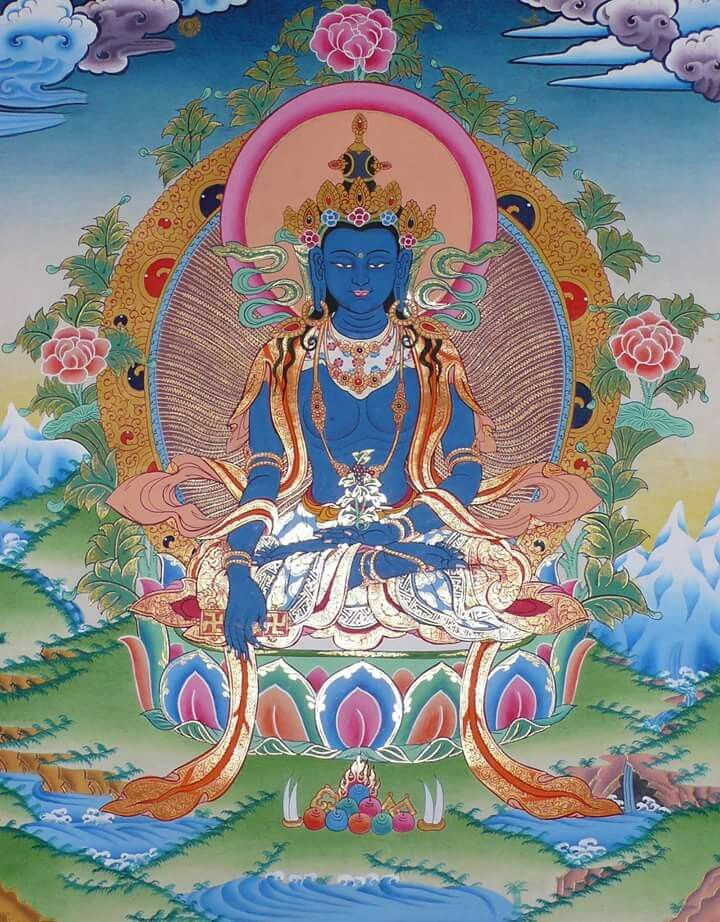Akshobhya

Akshobhya, Buddha (Tibetan: mi kyu pa, sang gye): a major Buddha in Vajrayana Buddhism associated with the eastern quarter of a mandala, and a minor Buddha in Mahayana Buddhism's sutra tradition, residing in the Abhirati Buddhafield. Akshobhya represents consciousness as a reality-derived element. Akshobhya is mentioned in the earliest mentions of the Buddhas of Wisdom. According to written records, a monk desired to practice meditation. He vowed not to harbor any ill will toward any being until he attained enlightenment. When he succeeded, he was renamed Buddha Akshobhya.
Those who practice Akshobhya, which means "unshakeable" or "immovable" in Sanskrit, meditate in complete stillness. Akshobhya is one of many Buddhas found in Mahayana and Vajrayana Buddhism. He is mentioned in the Mahayana Sutras of Northern Buddhism as well as Tantra literature. His images and sculptures depict him in a blue-black body with three robes, a staff, a jewel lotus, and a prayer wheel, flanked by two elephants.
Although a minor figure in the Sutras, Akshobhya is a major figure in the Tantras, playing an important role in Vajrayana Buddhism at all levels. In paintings, he is easily identified by his Buddha-like form, blue body color, and left hand holding an upright vajra scepter. There are no other Buddhist figures with the same iconographic appearance as this one. Tantric depictions of Buddhas frequently include jewel ornaments and a crown.










